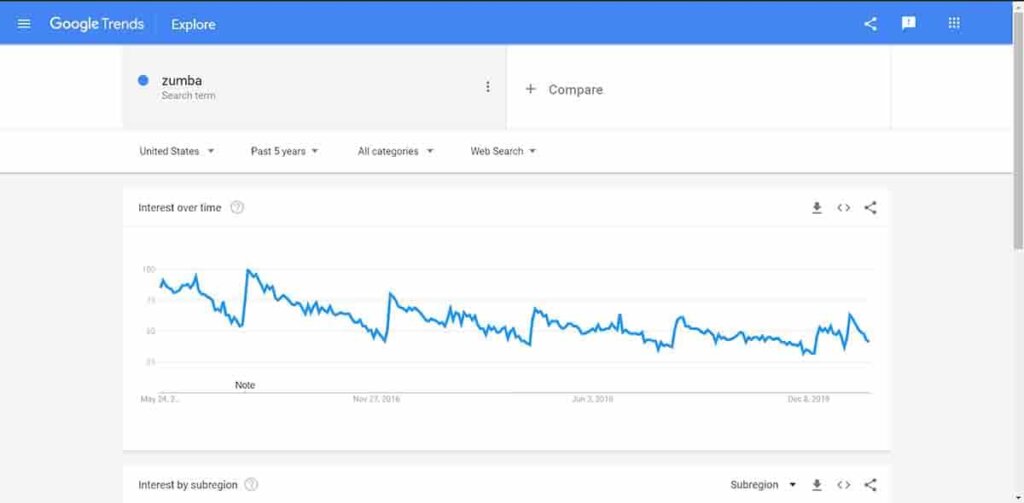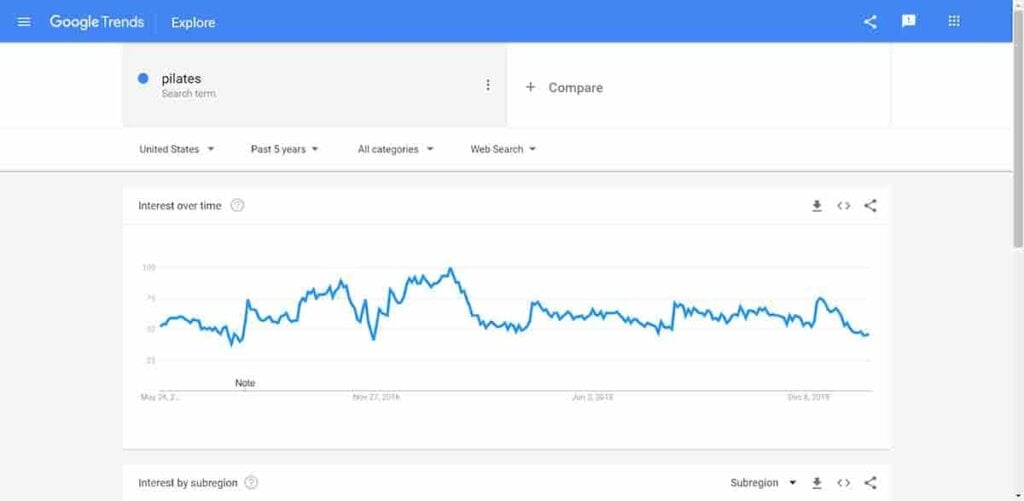With the significant and continuous growth of eCommerce sales, the number of online sellers competing for customers has increased dramatically. Global eCommerce sales will account for $6.86 trillion in 2025, which is an 8.37% increase from 2024, and the eCommerce market worldwide is projected to grow by 7.83% (2025-2029), resulting in a market volume of US$6,478.00bn in 2029. Over 2.77 billion online shoppers are expected by 2025, and millions of eCommerce stores worldwide continue to emerge each year.
To get ahead in this highly competitive market, sellers opening an online store or dropshipping business need to find a profitable eCommerce niche. Ideally, one that has a growing number of potential customers but has been overlooked by other sellers. It’s not easy, but we’re here to help!
What is an eCommerce niche?
An eCommerce niche is a distinct market of shoppers. The more specific your target customers are, the more niche your market becomes.
Some big companies, like Walmart for example, sell a wide range of items to a broad audience. But this requires a well-known name and huge resources. For sellers starting out, it’s better to focus on a niche. Yes, your audience will be smaller, but it will also be easier and more cost-effective to drive conversions.
Finding profitable eCommerce niches
If you already sell online and need a new angle, or you’re new and don’t know where to start, here’s how to find an eCommerce niche in 2025.
1. Don’t limit yourself to a single product
Starting off with an in-demand product can get your store off the ground, but it’s better to choose a niche market rather than a single product. Then, if the popularity of that product declines, you can sell related ones to your target audience.
Fidget spinners wouldn’t make for a sustainable business. Whereas, if you sold drones and sales began to fall, you could sell batteries, cameras, propeller guards and other accessories too.
2. Follow your passion
Random eCommerce niches are fine if they’re profitable, but if you have a genuine interest in what you’re selling, that’s even better.
Marketing your products is easier and more effective when you’re passionate and knowledgeable about them. It allows you to identify pain points and connect with customers. So if you have a niche interest or hobby, ask yourself what products you could sell to fellow enthusiasts.
3. Check what’s trending
Use tools like Google Trends to investigate the level of interest there is in your niche. Search broad terms, as well as specific products, to check the viability of your ideas.
For example, Google Trends shows that searches for ‘zumba’ have been declining for a few years. But ‘pilates’ receives consistent interest, so this may be a better niche market to get into.

But ‘pilates’ receives consistent interest, so this may be a better niche market to get into.

In Google Trends, make sure to set the relevant geographic location. You can then browse different timelines and geographic regions to see if international expansion would suit your business.
4. Conduct keyword research
Use tools like Google Keyword Planner, Ahrefs, or Ubersuggest to find high-volume, low-competition keywords related to your niche. Professional SEO tools like Ahrefs and Semrush provide deeper insights on search volume, keyword difficulty, trend data, and competitor information.
If search volumes are low, it’s unlikely to be one of the most profitable eCommerce niches out there. But if they’re sizable, this indicates market demand. You can then look at the competitiveness of the keyword to ascertain how saturated this eCommerce niche is.
Below, ‘pilates ring’ has a good keyword volume. However, competition for paid advertising (PD) is high. This means there are lots of other online sellers out there paying for ads for this search term. This is going to make your Google and Facebook ads more expensive.

5. Select products with high profit margins
Because of the limited target market, profitable eCommerce niches require products with a significant profit margin.
Low profit margins work great if you can move huge volumes of stock. But this won’t work if you’re just getting started. Smaller products can also lower shipping costs and storage fees. This is a particularly wise decision if you’re using Fulfillment by Amazon for your orders.
6. Research, research, research
Before you pick a niche for eCommerce, you need to look at both your competitors and target audience.
Search Amazon and Google for other sellers. Are they offering the best products? Do they have a strong brand? Can you compete on price? What could you do differently to stand apart from them?
Then, look at your target market. Is this audience large enough to make a profit? What are their shopping habits? What are they saying on forums?
Consider demographics, like age and disposable income. Searches on Google for ‘denture cleaner’ have been growing. But this audience probably doesn’t shop online much.
Finally, consider how distribution channels and fulfillment relate to your product sourcing efforts. It’s no good finding a great niche only to discover you won’t be able to ship and deliver the items without making a profit.
Top eCommerce niches in 2020
The environment is affecting shopping habits, along with lasting changes from recent global events. We’ve also identified other consistent trends likely to continue for the foreseeable future.
The list of eCommerce niches below is an example of some that are finding traction in 2025.
1. Sustainable and eco-friendly products
A recent study found that 66% of global consumers are willing to pay more for sustainable products and services. Sustainable, eco-friendly products are a rapidly growing niche in the eCommerce market, with a projected global market value of $150 billion by 2025.
The natural and organic beauty market continues to grow year-on-year. Though big brands dominate overall, it is possible to find profitable eCommerce niches within this category. There’s increasing interest in natural toothpaste, vegan beauty and cruelty-free beauty, while interest in making soap at home is also up.
As people become more environmentally conscious, the popularity of items like natural cleaning products, reusable cleaning products, plastic-free cleaning products, natural deodorant, bamboo toothbrushes and hand soap tablets is on the rise.
2. Health and wellness tech
The global health and wellness market is expected to reach $1.5 trillion by 2025. The emphasis on personal well-being drives the demand for health and wellness products. Consumers invest in products that promote their physical and mental health, from organic and natural foods to dietary supplements, fitness equipment, and wearable devices.

3. Pet products
Pet ownership is booming across the world, and Americans are spending more than ever on their furry friends – over $72 billion annually. Millennials are the largest pet-owning demographic and are happy to pay for quality products. They’re big online shoppers too.
Pet owners are looking for healthier options for their furry friends, which is driving the organic pet food market to grow at a CAGR of 5% between 2024 and 2032.
This sector offers sellers huge opportunities to find profitable eCommerce niches. Think pet subscription boxes, clothes, CBD products and pet cameras. There’s also continuous interest in specialist pet food, including organic, vegan, natural and grain-free.
4. Work-from-home equipment
According to Vox, 70% of the workforce will choose to stay at home working for at least 5 days a month. A report by Modor Intelligence suggests that the home office market’s CAGR (compound annual growth rate) will increase by 5.5% by 2025.
The trending niche has just taken its flight during COVID-19, which opens many opportunities for eCommerce owners to take advantage of. From opening online courses to selling equipment for distance working, this represents a significant opportunity for the most profitable eCommerce niches.
5. Kitchen gadgets and appliances
The market size for kitchen appliances is estimated at USD 259.02 billion in 2025. It’s expected to reach USD 321.40 billion by 2029, growing at a CAGR of 5.53%.
As people become more environmentally conscious, many young parents are environmentally conscious, so think along the lines of biodegradable diapers, reusable diapers and biodegradable baby wipes.
The market for baby care products is growing too. Parents spend two-thirds more than their childless counterparts, and, with more and more tech-savvy millennials becoming busy parents, online sales are likely to grow.
6. Fitness and wellness equipment
As living spaces become smaller, especially in urban areas, there is a demand for multifunctional home equipment. The US has the biggest market for gyms in the world, both in terms of revenue and memberships. However, the coronavirus pandemic saw a surge in online fitness sales, and this is likely to continue.
Consider selling niche products like HIIT jump ropes, pilates rings or cycling shorts. Trending products in this niche include hip resistance bands, yoga/exercise mats, battle ropes, pull-up bars, bike pedal exercisers, vibration plates, dumbbells, jump ropes, yoga balls, kettlebells, shaker bottles, and steppers.
7. Subscription boxes
BigCommerce suggests that the subscription model is one of the biggest eCommerce trends in 2024, and can continue in 2025. The global subscription services market will reach $1.5 trillion this year.
Subscription-based eCommerce is rising, offering consumers convenience and regular access to products and services they love. From meal kit subscriptions to monthly clothing boxes, beauty product deliveries, and streaming services, this niche provides a steady revenue stream for businesses.
8. Personalized and custom products
In an era where individuality is celebrated, personalized products are gaining prominence. Shoppers seek items that reflect their unique tastes and preferences, whether custom clothing, bespoke jewelry, or tailor-made home decor.
Printing t-shirts on demand allows you to create products to suit any trend, community or niche without wasting inventory. As this approach is less wasteful than traditional t-shirt printing, we envisage it will become more and more popular among online shoppers.
9. Gaming accessories and tech gadgets
With the gaming industry continuing to grow and evolve, gaming accessories represent a lucrative niche market. From specialized keyboards and mice to VR headsets and streaming equipment, gamers are willing to invest in high-quality accessories that enhance their experience.
Interest in minimalist jewelry and watches has grown slowly, but surely, over the past few years. With the likes of Marie Kondo and other prominent figures promoting minimalist lifestyles, eCommerce sellers can ride this bandwagon.
10. Travel and outdoor gear
According to the World Travel & Tourism Council, the global travel and tourism sector is forecasted to contribute $9.5 trillion to the global economy in 2025, nearly reaching pre-pandemic levels.
There’s a strong shift toward experiential travel, sustainable tourism, and outdoor activities that promote physical and mental wellness. People are not just booking vacations; they’re actively seeking authentic experiences like hiking, camping, RV trips, and eco-tours.
If you’re planning to enter this niche, here are some hot product ideas: travel accessories (packing cubes, travel pillows, anti-theft backpacks), camping gear (tents, portable stoves, lightweight cookware), outdoor apparel (moisture-wicking clothes, hiking boots), RV accessories and supplies, eco-friendly travel products (reusable water bottles, biodegradable toiletries), and digital nomad essentials (portable monitors, travel routers, laptop stands).
Using eCommerce niche software and tools
Finding ecommerce companies to sell to and identifying the best ecommerce niches requires the right ecommerce niche tools. For eCommerce, SEMrush’s Keyword Magic Tool is particularly useful. It allows you to explore broad and specific keywords, helping you discover niche opportunities that might have less competition.
Here are some essential eCommerce niche software tools to help you research and validate your niche ideas:
Keyword Research Tools:
- Google Keyword Planner (free)
- Ahrefs Keywords Explorer
- SEMrush Keyword Magic Tool
- Ubersuggest
Market Research Platforms:
- Google Trends
- Amazon Best Sellers
- Jungle Scout
- Helium 10
Competitor Analysis:
- SimilarWeb
- SpyFu
- SEMrush Competitive Research
Social Media Analytics:
- BuzzSumo
- Facebook Audience Insights
- Instagram Analytics
How to validate your eCommerce niche
Once you’ve identified potential eCommerce niches, it’s important to validate them before investing time and money. Here’s how:
Check market demand
Use keyword research tools to verify that people are actually searching for products in your niche. Look for consistent search volume over time, not just temporary spikes.
Analyze the competition
Study your competitors’ websites, products, pricing, and customer reviews. Look for gaps you can fill or ways to differentiate your offering.
Test with a small investment
Consider starting with a small product line or dropshipping arrangement to test market response before committing to large inventory purchases.
Evaluate profit potential
Calculate potential profit margins, including product costs, shipping, marketing, and platform fees. Ensure there’s enough margin to build a sustainable business.
Getting started with your eCommerce niche
Ready to launch your niche eCommerce business? Here are the essential steps:
- Choose your platform: Whether it’s Shopify, BigCommerce, or another eCommerce platform
- Source your products: Research suppliers and consider dropshipping vs. inventory models
- Build your brand: Develop a unique value proposition and brand identity
- Optimize for SEO: Implement keyword strategies and create valuable content
- Launch marketing campaigns: Use social media, paid ads, and content marketing
- Monitor and adjust: Track performance and be ready to pivot based on data
For more detailed guidance on succeeding in specific marketplaces, check out our guides on how to sell on eBay, then increase sales on eBay, how to sell on Etsy, and trending products to sell in eCommerce.
Conclusion
Finding the right eCommerce niche is crucial for success in 2025’s competitive marketplace. By focusing on emerging trends like sustainability, health tech, and personalized products, while using the right research tools and validation methods, you can identify profitable opportunities.
Remember that the most profitable eCommerce niches often combine growing market demand with your personal expertise and passion. Take time to research thoroughly, validate your ideas, and start small to test the waters before scaling up.
Whether you’re interested in eco-friendly products, pet supplies, or tech gadgets, the key is to find an underserved audience and provide exceptional value. With the right approach and tools, you can build a successful niche eCommerce business in 2025.
For additional support with customer service as you grow your eCommerce business, explore eDesk’s solutions for Amazon seller customer support, eCommerce help desk software, and AI in eCommerce.
Book a Demo with one of our experts today, to see how finding your eCommerce niche could transform your operations.




